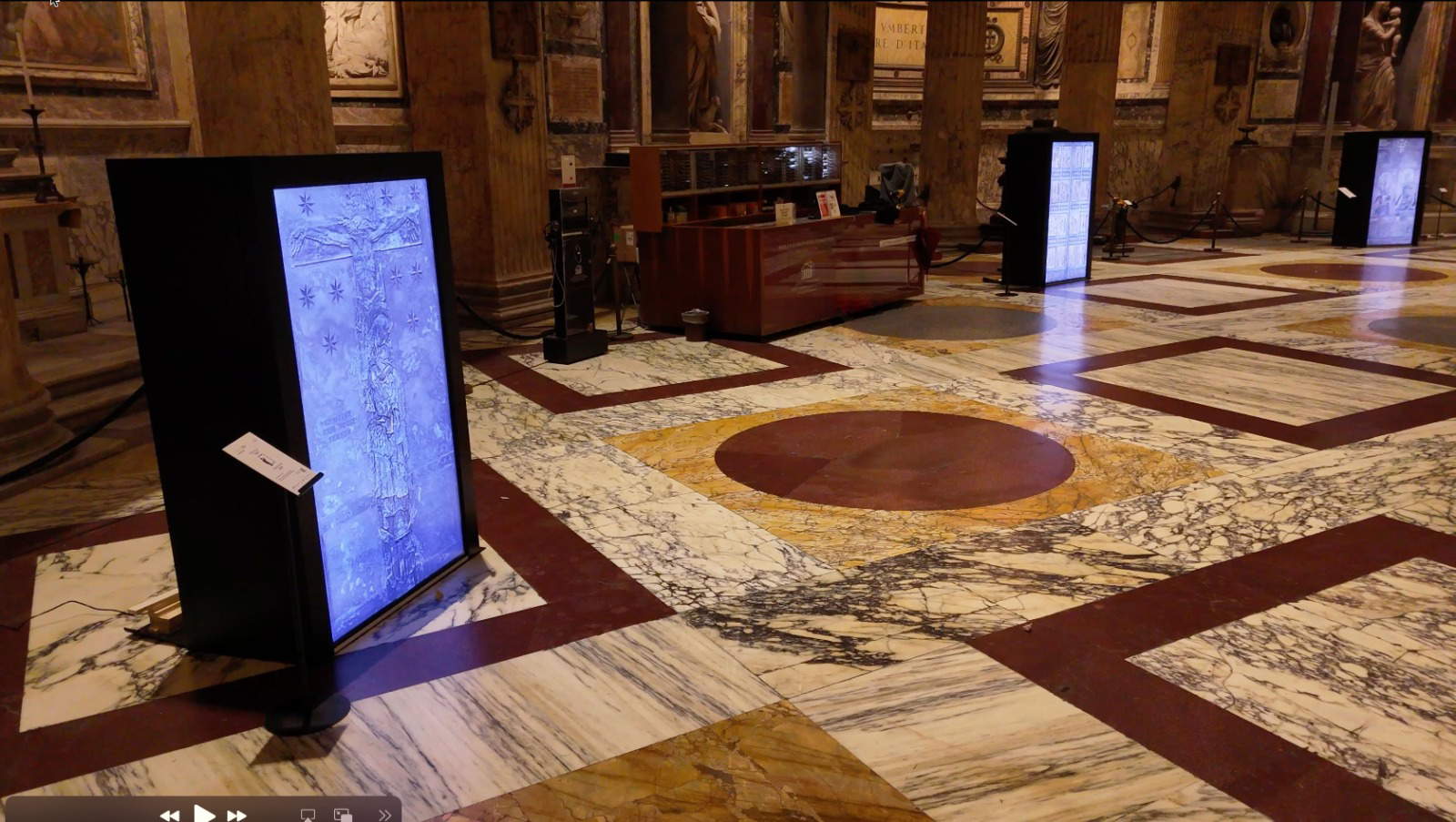Oculus-Spei, Annalaura Di Luggo's interactive installation, arrives at the Pantheon
In Rome, the Pantheon, welcomes Oculus-Spei, an interactive multimedia installation by artist Annalaura Di Luggo that reinterprets the theme of hope in the context of Jubilee 2025. Supported by the moral patronage of the Jubilee itself, the Ministry of Foreign Affairs and International Cooperation and the Ministry of Justice, the work aims to offer an artistic and inclusive perspective on the meaning of light and spirituality.
Promoted by the National Museums Directorate of the city of Rome, the initiative is scientifically coordinated by Gabriella Musto and curated by Ivan D’Alberto, historian and contemporary art theorist. Oculus-Spei benefits from the participation of four protagonists, chosen to represent the continents of the world and the sails of the Jubilee 2025 logo: Martina for Europe, Serigne for Africa, Ignatius for America, and Samantha for Asia. The creation of Oculus-Spei was also made possible thanks to the contribution of Pictet Asset Management and collaboration with Intesa Sanpaolo Group.




“Hope does not disappoint”: the message of the papal bull.
Taking inspiration from the Latin phrase “Spes non confundit”(Hope does not disappoint), which opens the papal bull of the upcoming Jubilee, Annalaura Di Luggo’s installation intervention transforms the Pantheon’s Oculus into a symbol of transcendence. The beam of light penetrating from above becomes the visual and conceptual centerpiece, leading visitors through five ideal Holy Doors.
These doors, physical and symbolic representations of a path of inner rebirth, invite the public to knock, making a gesture that marks the beginning of a transformative journey. Accompanying them are people with disabilities, who take on the role of spiritual guides and modern incarnations of Virgil, transfigured by light. With their contribution, the installation offers an “unprecedented look” at inner beauty and human richness.
“For this work,” the artist herself explains, “I was inspired by the eyes of my protagonists and the light entering from the oculus of the Pantheon. It is a journey through the holy doors, anticipating the Jubilee year, and in this journey we are accompanied by people with different abilities. Particularly in the last door, that of the Rebibbia prison, the user is put in front of himself thanks to a system of gesture recognition cameras in real time: a transformative space where, once again, it is light that activates a deep reflection on our condition as human beings.”
Davide Vincent Mambriani (Cultural Affairs Officer Dicastero per l’Evangelizzazione) said, “Right from the start, with pleasure, His Excellency Monsignor Fisichella, pro-prefect of the Dicastero per l’Evangelizzazione, has granted the patronage for this initiative, which sees its beginning today. It is beautiful, in addition to its artistic and moral value, that this exhibition that speaks of the opening of doors takes place just as the holy doors of Rome’s four papal basilicas are being demised. It is a great significance, allowing it to open as one of the first cultural initiatives that will accompany numerous throughout the Jubilee year.”
“’Hope does not disappoint’: this is how the papal bull for the Jubilee opens,” recalls curator Ivan D’Alberto, “and this is where Annalaura di Luggo’s project starts. She conceives five interactive doors that offer a journey of hope. Although the project has a Christian matrix, it should also be reread in a secular key, because hope belongs to art. So this dialogue between art and religiosity finds a perfect key with this interactive work by Annalaura.”




Inclusion and innovation
Annalaura di Luggo’s installation aims to present itself as an antidote to the growing homogenization of contemporary society. Through her enigmatic doors, totems that seem to come from an archaic past, the artist intends to issue an invitation to the public, to reflect on the contradictions of the present and to embark on a path of inner knowledge. Indeed, these doors, covered with evocative and symbolic surfaces, are meant to be a bridge between the outer and spiritual worlds.
The involvement of people with disabilities enriches the meaning of the work, with the aim of making it a deeply inclusive experience. These protagonists not only guide visitors, but also become symbols of a concrete hope, made of equal opportunities and appreciation of differences. Annalaura di Luggo’s approach does not hide the Christian matrix of the project, but enriches it with a universal vision that crosses the boundary between sacred and profane. Art, in this perspective, seeks to be capable of opening new horizons and connecting different sensibilities.
 |
| Oculus-Spei, Annalaura Di Luggo's interactive installation, arrives at the Pantheon |
Warning: the translation into English of the original Italian article was created using automatic tools. We undertake to review all articles, but we do not guarantee the total absence of inaccuracies in the translation due to the program. You can find the original by clicking on the ITA button. If you find any mistake,please contact us.




























